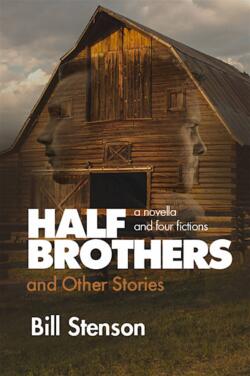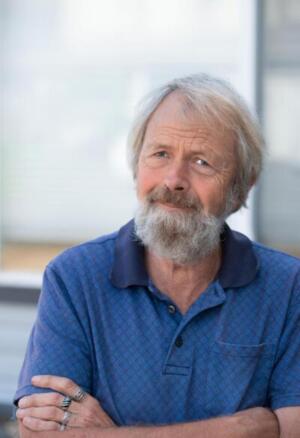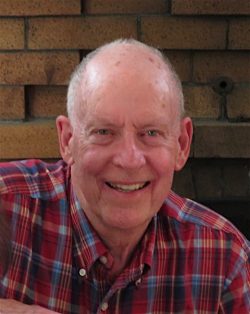1355 Cowichan plain
Half Brothers and Other Stories: a novella and four fictions
by Bill Stenson
Salt Spring Island: Mother Tongue Publishing, 2021
$23.95 / 9781896949857
Reviewed by W.H. New
*
 Bill Stenson has done something remarkable with these stories: he’s mastered a plain style, one so accessible that you think you’re listening to someone speak. It’s an extraordinary art. There are no fancy gimmicks, no convoluted shifts in point of view that leave the reader wondering what’s going on. Reality is all there, right in front of you.
Bill Stenson has done something remarkable with these stories: he’s mastered a plain style, one so accessible that you think you’re listening to someone speak. It’s an extraordinary art. There are no fancy gimmicks, no convoluted shifts in point of view that leave the reader wondering what’s going on. Reality is all there, right in front of you.
Or is it?
Stenson calls the four stories in this collection ‘fictions,’ as though to emphasize that they’re not real (we shouldn’t go chasing into biography to ask Did this happen? or ‘Who are you talking about?). They just ask us to listen. Set in the Cowichan Valley (or drawing on its communities and industries and landscapes), they all tell of young people, mostly boys in their teens, just before 12 and a few years on. These young people are bothered by restrictions, aching for excitement, annoyed at their parents or siblings or the opposite sex but preoccupied with them nonetheless, and in various ways they try desperately to be heard. Things don’t always work out. But if we listen, maybe we’ll understand what’s going wrong and maybe we’ll imagine what could go right. That’s what stories about adolescence recurrently do: they fasten on a point of change and ask what if or what about. Plain questions. Plain, and therefore, in Stenson’s world, plenty complicated.

‘Ball and Chain,’ the first of these ‘fictions,’ tells of a kid who’s moved from the East because of his lawyer mother’s wishes, but who doesn’t find his feet right away. Punished for what he considers a minor infraction, he rebelliously breaks into an old man’s house nearby, only to find himself entangled in other kinds of chain. A sentimental plot might tell of the boy and the old man discovering each other and the world being set instantly right. Indeed, there’s a fishing episode that gets close. But no, this story has more to say about the chains of responsibility that go by such names as marriage, parenthood, and community: the plain truths of living together, in other words, and the tangle that often misleads the people who forget what it means to make a connection work. Or at least to try.
The second story, ‘Bon,’ picks up on break-ins, this time involving a girl who becomes the ringleader of a sub-teen gang. The kicker here is that she misleads them all, then disappears, leaving them to forget she ever existed, if they can. But of course at least one of them can’t. It’s a love story of sorts, or a first-love story, dimly understood as power. Not everything is necessarily beautiful about First Love. And here, it’s acted out in callousness and cruelty. Not judgmentally — Stenson doesn’t step in and write moral tags — the stories insist instead on what actually happens: people survive or don’t, with memories they appreciate or regret. That’s the way it is.
Stenson’s style sometimes alleviates this matter-of-fact rendering of upset lives: the observations his characters make are often funny. The humour doesn’t undercut the seriousness; rather, like a lot of abrupt actions in the narratives, it’s a way that some of the characters find to avoid being swallowed up by what annoys or enrages or hurts or misleads them. The central character in ‘Super Reader,’ for instance — who likes books more than his athletic father and sibling do — simply (not so simply) ‘turns the page.’ It’s not a promise of uninterrupted happiness, but it does affirm a capacity to go on.

This contrast — in a kind of Cain-and-Abel story — underpins the longest narrative in the book, a novella called ‘Half Brothers,’ in which a seemingly passive brother has to deal with a violent brother (and several others). But revenge and forgiveness are hard masters, and neither, in this story, seems totally clear-cut — which once again seems ‘realistic.’ They’re the two faces of action, and the pull between them propels the story. Stenson vigorously imagines this half-brotherhood. Yet for me, ‘Half Brothers’ is the least successful of the five narratives, partly because the novella form has invited a kind of sprawl. There’s a boxing narrative, an illness narrative, an escape narrative, a parenting narrative, and more (the story shifts ground from the Cowichan to the Cariboo as well); these plot-lines interconnect. But while the conclusion seems apt, the way to get there feels elongated.
More concise is the fourth of the ‘fictions,’ titled (evocatively, for readers who remember grade school ‘Readers’) ‘Dick and Jane.’ The American textbook couple can apparently do anything, though all of it banal. The Cowichan sibling pair (a planner/doer and a listener/writer) try to figure out an active way to escape the banalities and perceived absurdities of their home. One of them (or both, or neither) may be successful, but (as in all the stories in Stenson’s arresting book) success is not something flashy. It’s more a kind of acceptable tension between what’s wanted and what’s likely, the plain truth of living, together, never quite alone.
*

William New is the author of Reading Mansfield & Metaphors of Form (McGill-Queen’s University Press, 1999); he has written widely on short fiction in Canada, Australasia, and elsewhere. He is also the author of a dozen collections of poetry, including The Rope-Maker’s Tale (Oolichan Books, 2009), Neighbours (Oolichan, 2017), and In the Plague Year (Rock’s Mills Press, 2021). Editor’s note: William New has also reviewed books by Jack Wang, Michael Kenyon, David Bergen, Darcy Bysouth, Julie Paul, Philip Huynh, and B.A. Thomas-Peter for The Ormsby Review.
*
The Ormsby Review. More Books. More Reviews. More Often.
Publisher and Editor: Richard Mackie
The Ormsby Review is a journal service for in-depth coverage of BC books and authors in all fields and genres. The Advisory Board consists of Jean Barman, Wade Davis, Robin Fisher, Cole Harris, Hugh Johnston, Kathy Mezei, Patricia Roy, Maria Tippett, and Graeme Wynn. Scholarly Patron: SFU Graduate Liberal Studies. Honorary Patron: Yosef Wosk. Provincial Government Patron since September 2018: Creative BC
“Only connect.” – E.M. Forster
3 comments on “1355 Cowichan plain”